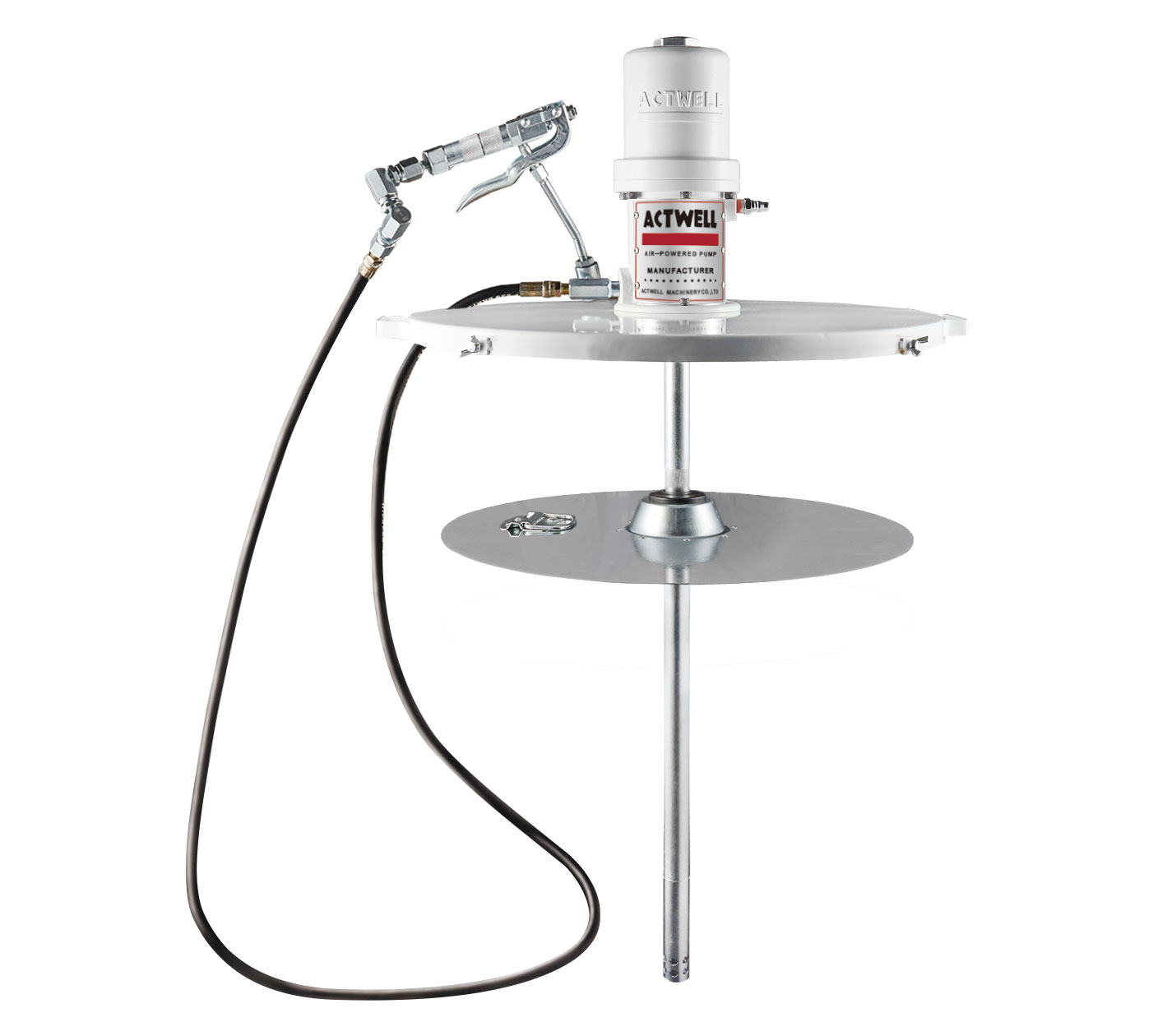Principle of Pneumatic Lubrication Pump
The principle of a pneumatic lubrication pump involves the applica tion of pneumatics and fluid mechanics. This mechanical device is primarily designed to convert pneumatic energy into mechanical energy, thereby driving a pump to convey grease or other semi-fluid substances to the desired location. Here is a general overview of the working principles of a pneumatic lubrication pump:
tion of pneumatics and fluid mechanics. This mechanical device is primarily designed to convert pneumatic energy into mechanical energy, thereby driving a pump to convey grease or other semi-fluid substances to the desired location. Here is a general overview of the working principles of a pneumatic lubrication pump:
Pneumatic Energy Transmission: Pneumatic lubrication pumps utilize gas, typically air, as their power source. This gas is usually propelled through a pneumatic cylinder, where the gas undergoes compression or expansion, generating motion.
Pneumatic Cylinder: The pneumatic lubrication pump consists of a sealed cylindrical structure known as a pneumatic cylinder. Inside this cylinder is a piston, and the movement of the piston is controlled by the pneumatic pressure from the gas supply.
Pressure Control: By adjusting the pneumatic pressure from the gas supply, the compression and expansion of the gas within the pneumatic cylinder can be controlled. This, in turn, governs the movement of the piston. Typically, this is achieved through a pneumatic control valve.
Piston Movement: Within the pneumatic cylinder, a piston is associated with the gas inside. As the gas is pushed in or pulled out, the piston moves accordingly. The energy produced by this movement is transferred to connected mechanical components.
Pump: The generated mechanical energy is ultimately used to drive a pump, which conveys lubricating oil or another fluid to the target area. This could be a container, pipeline, or another application.


